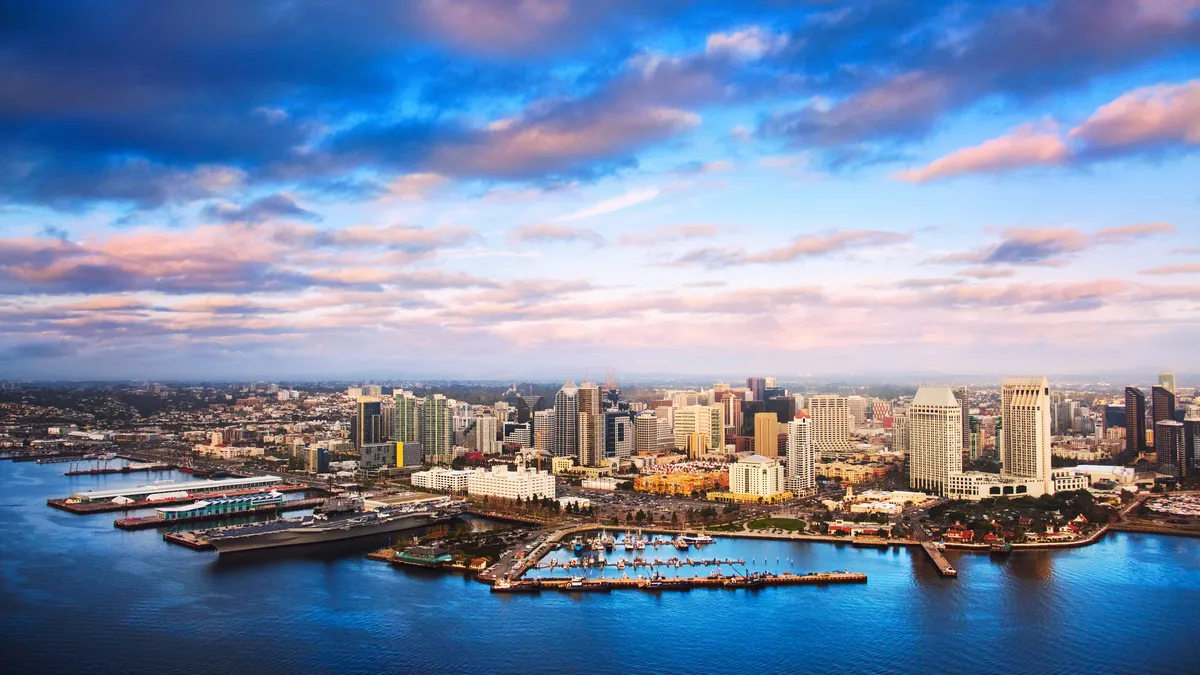Dive Brief:
- San Diego began construction Friday on the first of eight solar-powered “microgrids” it is installing at municipal facilities to reduce the city’s carbon footprint, save taxpayer money and increase community resiliency during power outages.
- Growing in popularity, microgrids are local, self-sufficient energy systems that can function independently from the larger grid. San Diego is siting its microgrids at fire and police stations, community centers and recreation centers.
- The city estimates the microgrids will save the city $6 million over 25 years. Batteries will store the excess solar energy a site generates, with that energy powering the facility in the afternoons and evenings, when electricity prices rise, said Kelly Terry, senior public information officer.
Dive Insight:
By 2035, microgrids will be “essential building blocks of the future electricity delivery system to support resilience, decarbonization, and affordability,” according to the U.S. Department of Energy.
Only a smattering of microgrids have been installed to date, however, at federal, state and municipal buildings that serve a public function, according to the department’s microgrid installation database.
San Diego’s municipal microgrids will bring the city closer to its 2035 goal to power all municipal buildings with renewable energy. The city also is working to reduce the facilities’ energy use about 35% compared with 2010.
The buildings selected for microgrid installation will be able to serve communities during grid outages, acting as shelters or supply distribution centers. The city likened installing the microgrids to installing a backup diesel generator, but without the greenhouse gas emissions.
A challenge to widespread deployment of microgrids is that the systems are expensive to install, according to Gridscape, a California-based renewable energy provider involved in San Diego’s microgrids project.
“Microgrid projects often require significant upfront capital investment due to the integration of various components such as renewable energy sources, energy storage systems, and advanced control systems,” according to Gridscape. “The high initial costs can deter potential investors and make securing financing challenging.”
Shell New Energies, an arm of the Dutch oil giant Shell, is partially funding San Diego’s microgrids. The energy company will develop, own and operate the microgrids. The projects are also supported by $950,000 in grants from the California Energy Commission.












